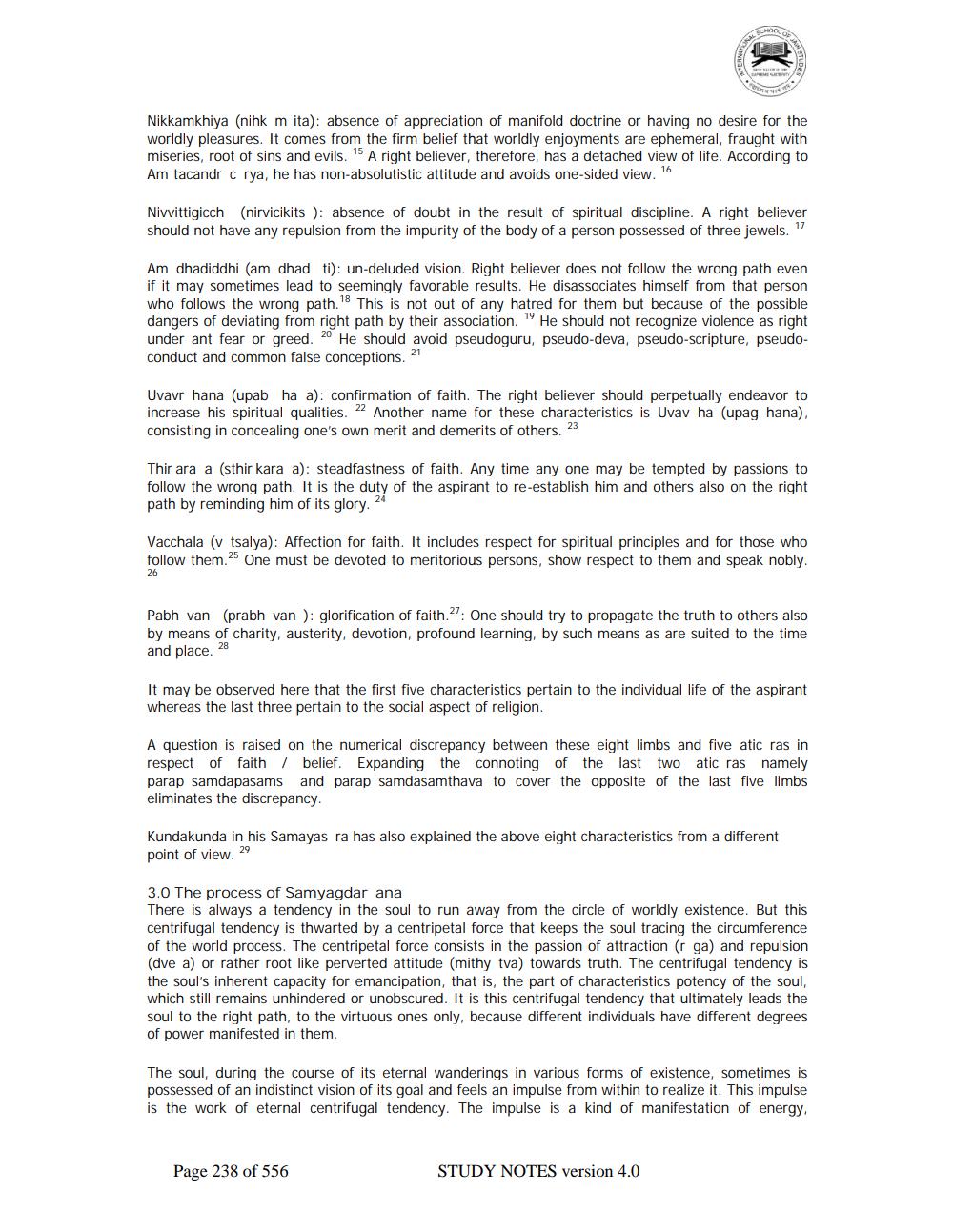________________
Nikkamkhiya (nihk m ita): absence of appreciation of manifold doctrine or having no desire for the worldly pleasures. It comes from the firm belief that worldly enjoyments are ephemeral, fraught with miseries, root of sins and evils. A right believer, therefore, has a detached view of life. According to Am tacandr c rya, he has non-absolutistic attitude and avoids one-sided view. 16
Nivvittigicch (nirvicikits): absence of doubt in the result of spiritual discipline. A right believer should not have any repulsion from the impurity of the body of a person possessed of three jewels."
Am dhadiddhi (am dhad ti): un-deluded vision. Right believer does not follow the wrong path even if it may sometimes lead to seemingly favorable results. He disassociates himself from that person who follows the wrong path. 18 This is not out of any hatred for them but because of the possible dangers of deviating from right path by their association. He should not recognize violence as right under ant fear or greed. He should avoid pseudoguru, pseudo-deva, pseudo-scripture, pseudoconduct and common false conceptions. 21
Uvavr hana (upab ha a): confirmation of faith. The right believer should perpetually endeavor to increase his spiritual qualities. 22 Another name for these characteristics is Uvav ha (upag hana), consisting in concealing one's own merit and demerits of others. 23
Thir ara a (sthir kara a): steadfastness of faith. Any time any one may be tempted by passions to follow the wrong path. It is the duty of the aspirant to re-establish him and others also on the right path by reminding him of its glory. 24
Vacchala (v tsalya): Affection for faith. It includes respect for spiritual principles and for those who follow them. One must be devoted to meritorious persons, show respect to them and speak nobly.
26
Pabh van (prabh van ): glorification of faith.27: One should try to propagate the truth to others also by means of charity, austerity, devotion, profound learning, by such means as are suited to the time and place. 28
It may be observed here that the first five characteristics pertain to the individual life of the aspirant whereas the last three pertain to the social aspect of religion.
A question is raised on the numerical discrepancy between these eight limbs and five atic ras in respect of faith / belief. Expanding the connoting of the last two atic ras namely parap samdapasams and parap samdasamthava to cover the opposite of the last five limbs eliminates the discrepancy.
Kundakunda in his Samayas ra has also explained the above eight characteristics from a different point of view. 29
3.0 The process of Samyagdar ana There is always a tendency in the soul to run away from the circle of worldly existence. But this centrifugal tendency is thwarted by a centripetal force that keeps the soul tracing the circumference of the world process. The centripetal force consists in the passion of attraction (r ga) and repulsion (dve a) or rather root like perverted attitude (mithy tva) towards truth. The centrifugal tendency is the soul's inherent capacity for emancipation, that is, the part of characteristics potency of the soul, which still remains unhindered or unobscured. It is this centrifugal tendency that ultimately leads the soul to the right path, to the virtuous ones only, because different individuals have different degrees of power manifested in them.
The soul, during the course of its eternal wanderings in various forms of existence, sometimes is possessed of an indistinct vision of its goal and feels an impulse from within to realize it. This impulse is the work of eternal centrifugal tendency. The impulse is a kind of manifestation of energy,
Page 238 of 556
STUDY NOTES version 4.0




